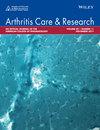Comparing Community-Level Social Determinants of Health With Patient Race in Total Hip Arthroplasty Outcomes
Abstract
Objective
Social determinants of health (SDOH), including race, have a key role in total hip arthroplasty (THA) disparities. We compared the collective influence of community-level SDOH to the influence of individual factors such as race, on THA outcomes.
Methods
This retrospective cohort study of the Pennsylvania Health Care Cost Containment Council Database (2012–2018) included 105,336 patients undergoing unilateral primary elective THA. We extracted “community” factors from the US census by geocoding patient zip codes, including walkability index, household income, foreign-born individuals, English proficiency, computer and internet access, unpaid family workers, those lacking health insurances, and education. We trained an explainable boosting machine, a modern form of generalized additive models, to predict 90-day readmission, 90-day mortality, one-year revision, and length of stay (LOS). Mean absolute scores were aggregated to measure variable importance (ie, variables that contributed most to the prediction).
Results
The rates of readmission, revision, and mortality were 8%, 1.5%, and 0.3%, respectively, with a median LOS of two days. Predictive performance measured by area under the receiver operating characteristic curve was 0.76 for mortality, 0.66 for readmission, and 0.57 for one-year revision. For LOS, the root mean squared error was 0.41 (R2 = 0.2). The top three predictors of mortality were community, discharge location, and age; for readmission, they were discharge location, age, and comorbidities; for revision, they were community, discharge location, and comorbidities; and for LOS, they were discharge location, community, and comorbidities.
Conclusion
Community-level SDOH were significantly more important than individual race in contributing to the prediction of THA outcomes, especially for 90-day mortality.

 求助内容:
求助内容: 应助结果提醒方式:
应助结果提醒方式:


